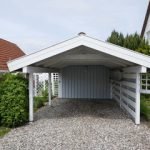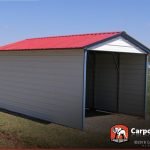Ceiling board is the interior surface that covers the top limits part of a room. It is not considered as a structural element but as the finished surface of the room. It is placed underside of the main roof structure of the room to enable the architects to maintain the look of the room. They usually have different sizes which allow the areas to be covered with minimal joints.
Ceiling board materials
Wood: Wood is one of the most commonly used ceiling building materials for both interior and exterior because it looks natural and classic as compared to other ceiling boards. It can be decorated using as many different molding as possible.
Plaster: Plaster is one of the most popular ceiling building materials used around the whole world. It has been used for centuries because it has a smooth, hard and attractive surface that is decorated easily.
Metal: Metals are often used for ceiling layouts. Metals are best used for supporting plaster ceiling structures.
Types of ceiling boards
Gypsum Ceiling boards: It is made from gypsum sheets, tiles, and even boards. Its material is available in large sizes and it’s always economical, tough a, and versatile. It can be decorated with the use of paints, laminates, and wallpapers.
Advantages of the Gypsum ceiling
- It has different shapes and designs hence make it highly flexible for use in all shapes of the room.
- It is excellent in fire-resistive.
- It can control the unwanted sound transmission which can enter to a room depending on the design.
- It is durable and stable since its surface is easy to decorate and maintain.
- It is always available and easy to use in your room.
- It is cheap.
Disadvantages of the Gypsum ceiling
- It cannot be recycled once it has expired or used.
- It is not easy to mold different forms.
Wooden ceiling boards: Wooden ceiling board is one the best used in different homes and offices across the world due to its natural beauty and appearance. It is well known for its flexibility to come up with different patterns as much as possible to make your ceiling more attractive and interesting.
Advantages of wooden ceiling boards
- It is easy to install since it has a wooden panel which can be joined together with different standards of commercial false ceiling systems
- It can act as a thermal insulator since wood is a natural insulator that can reduce the amount of heat entering the room.
- Wooden ceiling can be easily recycled.
- It contains many different designs that bring warmth and elegance.
- It can increase its lifespan if it is well treated.
Disadvantages of wooden ceiling boards
- It is hard to maintain because of unexpected damages that might occur in the room.
- It requires thermal control to minimize the level of humility.
- It is expensive.
Plaster ceiling boards: It is one of the most commonly used ceiling in many houses and offices across the world.
Advantages of Plaster ceiling boards
- It is attractive and long-lasting.
- It has a smooth surface that can be molded into different shapes.
- It is possible to paint its surface to match your inner style of the room.
Disadvantages of plaster ceiling boards
- It can be easily damaged by insects.
- It cracks so easily.
Metal ceiling boards: This is the type of ceiling that most people like it because of its durability and shine material which is used. The shine material enhances the beauty of the interior of the room. It is mostly used in non-residential houses like hospitals, shopping malls, airports, and offices.
Advantages of metal ceiling
- The metal ceiling is easy to clean.
- They are strong hence do not experience cracking or warping over time.
- They can absorb or redirect sound which may create an echo chamber.
- It is fire-resistant.
Disadvantage of metal ceiling
- It is very expensive to buy and maintenance against corrosion.









